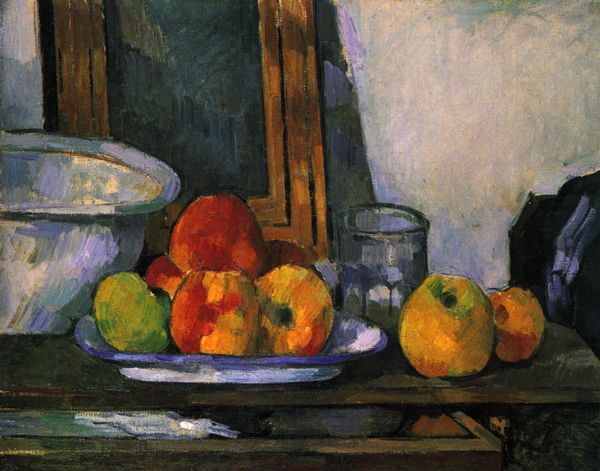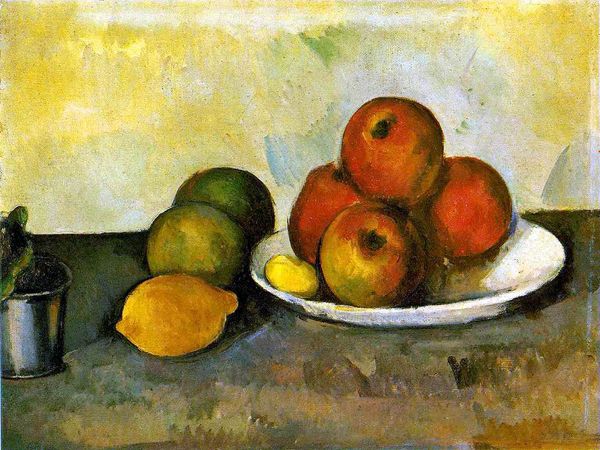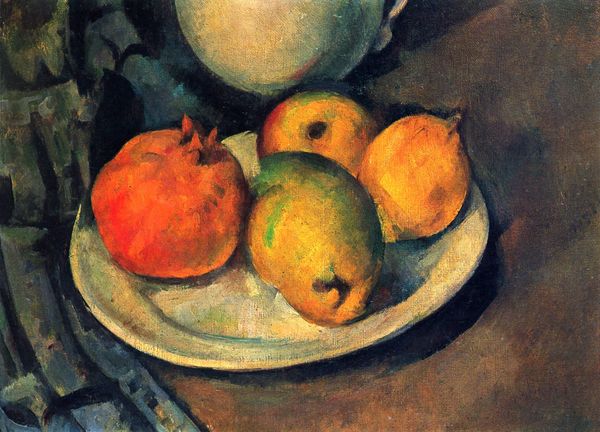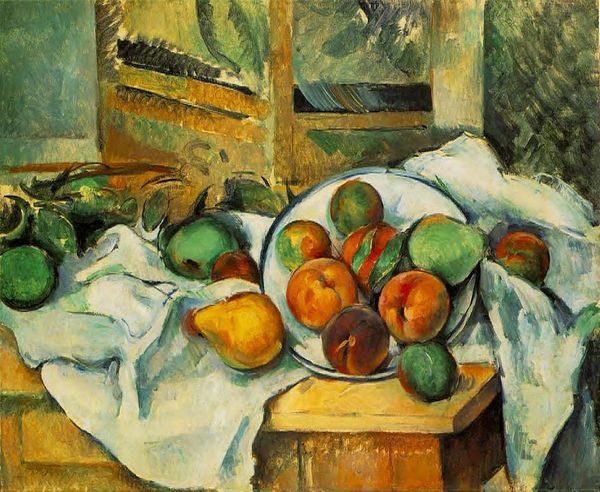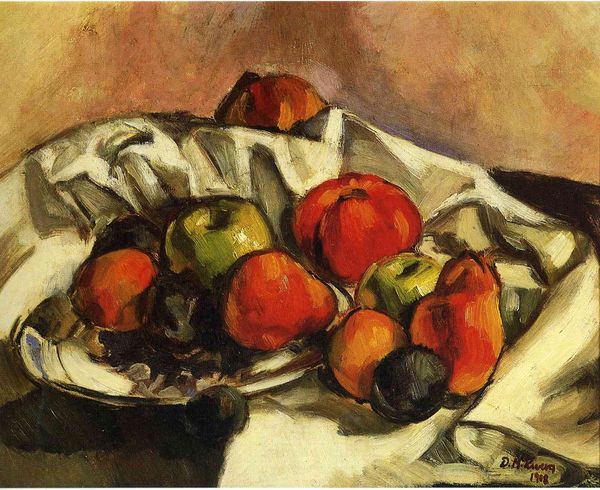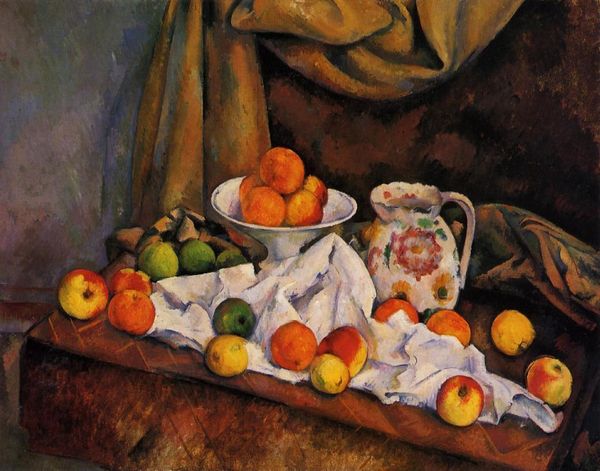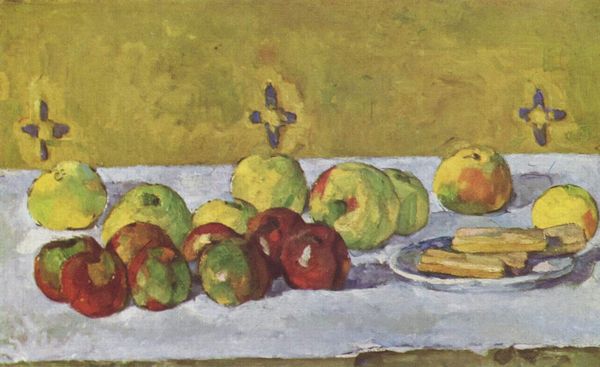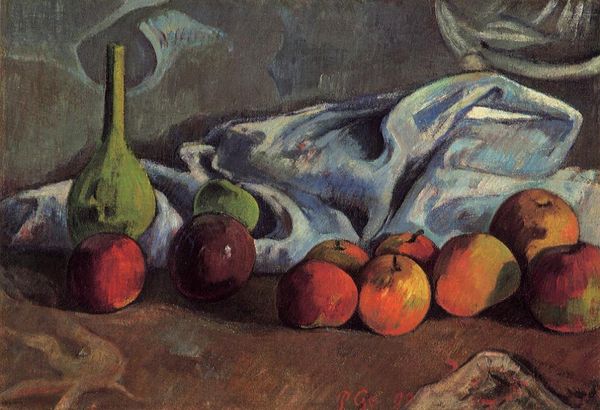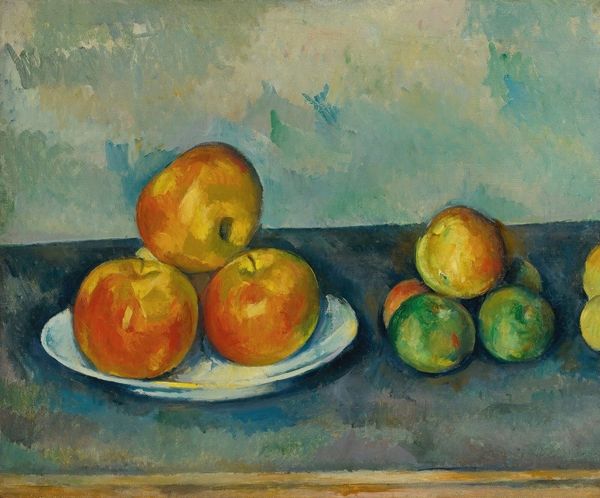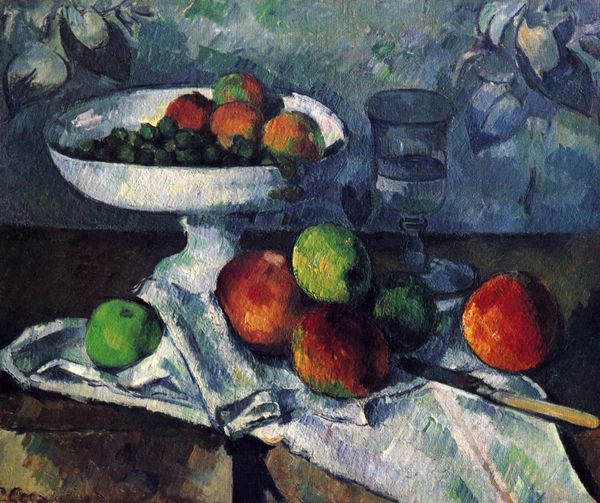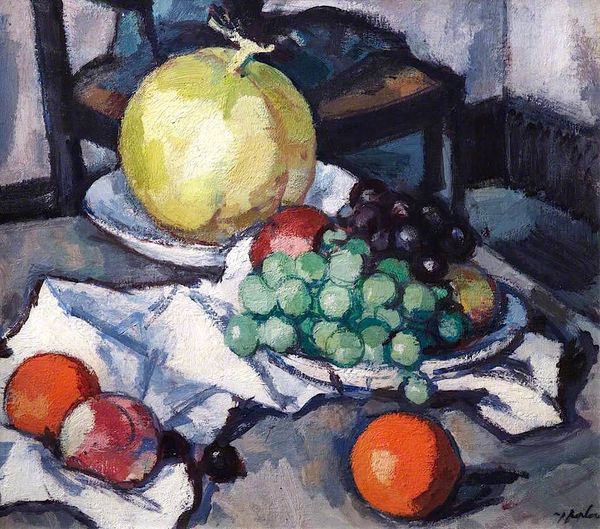
painting, oil-paint, impasto
#
food
#
painting
#
oil-paint
#
form
#
oil painting
#
impasto
#
fruit
#
post-impressionism
#
realism
Copyright: Public domain
Curator: This is Paul Cézanne's "Still Life with Apples and Pears," painted around 1887. Note how the impasto oil paint application gives the fruit a palpable, almost sculptural quality. Editor: It feels…substantial. The brushstrokes themselves carry weight. Not delicate, more…grounded. What strikes me is how deliberate the construction of this domestic scene is. Curator: Deliberate is key. Consider Cézanne's process: building up form through layers of paint, wrestling with perspective and volume. These apples and pears become vehicles for exploring form, almost abstract exercises in materiality. We must not forget the economic accessibility of painting such humble objects at that time. Editor: True, it is anything but straightforward Realism! But this "humbleness," that very availability to the artist is perhaps deceptive. Can we really divorce this presentation of nature morte from societal concerns regarding sustenance? Class and labor are invisibly present within such still-life paintings from this period. The accessibility is purely the artist's. Curator: Precisely! Look at the relationship between the artist's labor and the material qualities of the fruit. Cézanne transforms readily available fruit through the arduous work of repeated observation and application. We are given something more lasting than fresh fruit in return for that labor. Editor: And in this transformation, how does the act of elevating a common object become a subtle commentary? We tend to think of these paintings of food divorced from context. Yet these paintings quietly represent the value—and distribution—of food in 19th century France. Were certain fruits seen as symbols of privilege? We need to consider those power dynamics. Curator: Good point! Cézanne's concentration transcends mere depiction and invites us to scrutinize the labor, the production of form, the act of seeing itself. It's like the entire painting, every stroke, pushes against the boundary between art and craft. Editor: I see your perspective, particularly that invitation. In acknowledging how these "humble objects" come into existence within broader social frameworks we grant Cézanne his due! He doesn’t exist in a vacuum and his creations resonate more profoundly with recognition of these factors. Curator: Well said, perhaps there’s even more there than I initially realized. Editor: As with most art, I would expect nothing less from deeper interrogation.
Comments
No comments
Be the first to comment and join the conversation on the ultimate creative platform.
